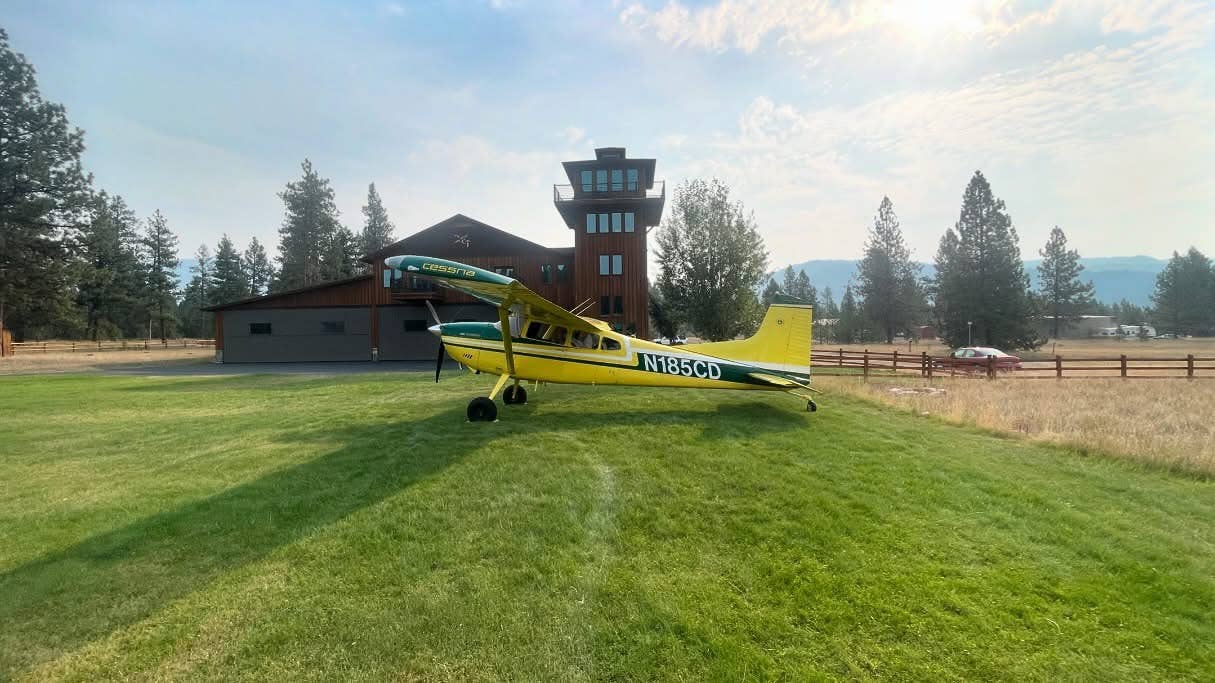Hangar Direct Provides Options for Aircraft Seeking Temporary Shelter
The online platform was designed to help aircraft operators find transient hangar space on short notice.

What users of the Hangar Direct platform see when looking for short-term hangar space. [Courtesy: Hangar Direct]
“I’ve always been entrepreneurial and have had this techy side of me, with absolutely no background in tech whatsoever. The inspiration for Hangar Direct was that about a year and a half ago I was in Minnesota, flying as a contractor. I got to my destination, pulled out my phone, and what do you know? There was a massive storm that was going to hit Minneapolis in an hour and half. Well, what do you do? You need a hangar,” said Trenton Ray, founder of Hangar Direct, an online platform that connects hangar owners with those looking for hangar space.
Ray explained that finding transient hangar space, especially on short notice, requires a lot of phone calls and an equal amount of luck.
“You just pick up the phone and start dialing,” said Ray. “It’s the same thing every time. It’s, ‘Oh, we will get back with you,’ or ‘I need to speak to the manager.’ You never get an answer. But this time I finally got an answer from a [woman] at the FBO, who said they could do it [give us hangar space] for $1,000 per night.”
The price made him think that there was opportunity to infuse the marketplace with additional short-term, covered aircraft storage space. As a corporate pilot, Ray said it happens at least once a year where he needs to get an overnight hangar for his client—regardless of the cost. Even with open space hidden at airports across the country, hangar owners that are able to sublease their spaces don’t have an easy avenue to become connected with interested parties, according to Ray.
“You hear about crazy hangar wait lists all over, but the marketplace for them is Facebook, of all things!” said Ray. “So, I finally said, ‘This is it,’ and I set out to create Hangar Direct. One of my really good friends, Tanner Embry, who is also 28 years old like me, is a super-talented software developer. I came to him and said that I don’t know jack about tech and that he didn’t know jack about aviation but thought that we could do this. And it has worked. We have a team of developers and have been writing code for almost a year and a half.”
Ray provided further detail about Hangar Direct and its mission.
“Hangar Direct is a transient hangar platform that runs and operates very similarly to Airbnb,” he said. “It has the same breakdown [of categories] and has a Google Maps API that is very similar to other sites. The website is fully operational and free to use, with apps coming soon for both iPhone and Android. We have tried to comb in every ounce of negativity and provide solutions. For example, all transactions use Stripe, so it’s safe and secure.
“And it’s really simple to upload your hangar for others to see. You list the location on the map, note the price, upload five photos, and a few additional details—such as size and entry method. If you are worried about insurance, we will list you as additionally insured and are currently finalizing our insurance. Hangar Direct offers 24/7 customer support as well as a chat function allowing users to communicate with each other regarding their reservation.”
The feedback Ray has received about the platform thus far has been positive. He contends that typically aviation is a late adopter of technology, and Hangar Direct fills a gap in the aviation real estate market.
“Whenever I talk to people about this cool tool we are going to release, they are always impressed,” he said. “I think a lot of that comes down to [the fact] that everything in aviation happens last, technology specifically. We are currently in beta [test] and have been onboarding new users since September 1. To date, over 200 people signed up to use the app and over 500 on our list to receive updates as they become available. Everybody is really excited about Hangar Direct. We could launch this officially to the market tomorrow. But we are really trying to make sure that this whole thing is buttoned up, that we’ve talked to the right people, and we have partnered with the correct organizations.”
The growing list of official partners includes FlytoPlaces, Airplanes & Coffee, Boomtown Brokerage, and FlightBridge, which was most recently added to the list. FlightBridge is used by more than 4,000 aircraft operators and 3,000 FBOs to arrange and manage trip logistics. Ray hinted that Cutter Aviation (GTU) will soon be announced as the official FBO launch partner for the software.
Hangar Direct’s method of attracting users thus far has mainly been through word of mouth, as well as Ray personally building relationships with airports and hangar owners. One of the first airport relationships he sought was his local airfield—Georgetown Executive Airport (GTU) in Texas just north of Austin. The platform’s short-term leasing methodology is a new way of thinking for many airports.
“Some private and municipal airports don’t allow subleasing,” he said. “[And] they will not approve the addition and construction of more hangars. We found a way that benefits everyone. We’ve recently started working with multiple city and county officials and have learned that a majority of these municipalities are open to the idea of short-term leasing (less than a month). Hangar Direct gives airports and hangar owners a hands-off tool to conveniently operate and benefit from the transient traffic that rents their hangars.
“Georgetown Executive Airport has agreed to incorporate the idea and will become Hangar Direct’s first municipal airport to adopt our platform in hopes of alleviating their hangar occupancy issues. Matthew [Sommerfeld], the new airport manager, is [really] open to trying new things and realizes that there is a hangar space issue not only at GTU, but all over. We are speaking with a few more [airports] that we are hopeful of officially announcing in the next few weeks.”
Ray is extremely optimistic for the future of his platform and how it can help to alleviate the national need for hangar space.
“We understand that there is a lot of change that can be made,” he said. “The reality of it is that all of this is very possible, but there is a ton of red tape. I say that because we initially wanted to go after FBOs because I work full time in business aviation. The [GA] community is kind of a losing battle for many FBOs, as they make most of their [money] on big jets and jet fuel. We are a community product, but at the end of the day, I am involved in corporate aviation, and I would like to work our product into that market. Hangar Direct can grow in a heartbeat. It’s all just a matter of establishing a footprint in general aviation first.”

Sign-up for newsletters & special offers!
Get the latest FLYING stories & special offers delivered directly to your inbox






